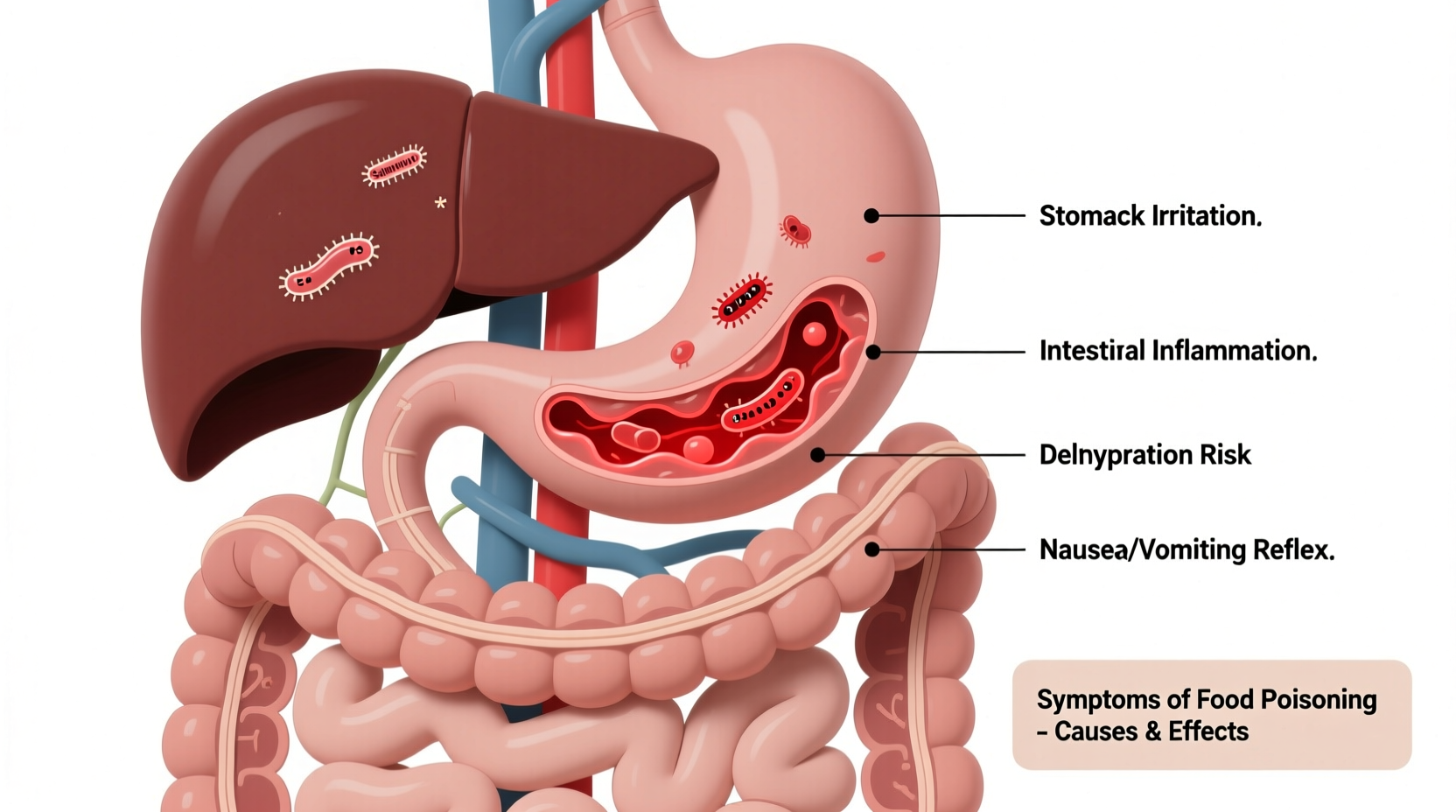When harmful bacteria, viruses, or toxins enter your digestive system through contaminated food, your body immediately recognizes them as threats. What does food poisoning do at the cellular level? It disrupts normal digestive processes, damages intestinal lining, and triggers inflammatory responses that manifest as the uncomfortable symptoms we associate with foodborne illness.
How Pathogens Hijack Your Digestive System
Food poisoning occurs when pathogenic microorganisms or their toxins invade your gastrointestinal tract. What happens during food poisoning begins with these invaders attaching to the cells lining your intestines. Bacteria like Salmonella and E. coli actually inject proteins into your intestinal cells, tricking them into allowing bacterial entry. This cellular invasion triggers your immune system to release inflammatory chemicals, causing the characteristic swelling and irritation.
Viruses like norovirus work differently - they replicate inside your intestinal cells, eventually causing those cells to burst and release more virus particles. This cellular damage directly contributes to what food poisoning symptoms feel like as your body loses its ability to properly absorb fluids and nutrients.

Symptom Timeline: What Happens Hour by Hour
Understanding what food poisoning does to your body over time helps manage expectations during recovery. The progression varies by pathogen but generally follows this pattern:
| Time After Exposure | Physiological Changes | Noticeable Symptoms |
|---|---|---|
| 1-6 hours | Toxins begin affecting intestinal cells | Nausea, stomach discomfort |
| 6-24 hours | Inflammation increases, fluid secretion rises | Vomiting begins, diarrhea starts |
| 24-48 hours | Peak inflammation, significant fluid loss | Frequent diarrhea, possible fever, dehydration signs |
| 48-72 hours | Immune response clears pathogens, healing begins | Symptoms gradually decrease, energy returns |
This food poisoning symptom progression timeline shows why most cases resolve within 1-3 days as your body successfully eliminates the threat and begins repairing damaged tissue. However, certain pathogens like Campylobacter can cause symptoms lasting up to 10 days, while others like Listeria may take weeks to manifest.
How Different Pathogens Cause Distinct Effects
Not all food poisoning works the same way. The specific pathogen determines what food poisoning does differently in your system:
- Salmonella - Invades intestinal cells, causing inflammation that leads to diarrhea, fever, and cramps. Symptoms typically appear 6-72 hours after exposure.
- E. coli O157:H7 - Produces Shiga toxin that damages blood vessels in kidneys, potentially causing hemolytic uremic syndrome in severe cases.
- Norovirus - Rapidly attacks intestinal lining cells, causing violent vomiting and watery diarrhea within 12-48 hours.
- Listeria - Unique ability to grow at refrigerator temperatures and cross the blood-brain barrier, causing more severe complications in vulnerable populations.
Dehydration: The Critical Secondary Effect
While vomiting and diarrhea represent your body's attempt to expel contaminants, the resulting fluid loss from food poisoning creates a dangerous secondary effect. Your body loses not just water but essential electrolytes like sodium, potassium, and chloride that maintain proper cellular function.
According to the Centers for Disease Control and Prevention (CDC), dehydration affects approximately 1 in 6 Americans who experience food poisoning each year, with children and elderly adults at highest risk. CDC data shows that proper hydration management reduces hospitalization rates by 40% for moderate cases.
When Food Poisoning Crosses Into Dangerous Territory
Most food poisoning cases follow a predictable course and resolve without complications. However, certain severe food poisoning warning signs indicate when the condition has progressed beyond typical self-limiting illness:
- Diarrhea lasting more than 3 days
- Fever higher than 102°F (38.9°C)
- Signs of severe dehydration (dark urine, dizziness, dry mouth)
- Bloody stools or vomit
- Nervous system symptoms like blurred vision or muscle weakness
These symptoms suggest the infection has spread beyond the digestive tract or caused significant complications. The National Institute of Diabetes and Digestive and Kidney Diseases emphasizes that certain populations - including pregnant women, older adults, and immunocompromised individuals - should seek medical attention at the first sign of food poisoning symptoms.
Your Body's Natural Recovery Process
As your immune system gains control, how your body recovers from food poisoning follows a specific healing pattern. The intestinal lining begins regenerating within 24-48 hours after the pathogen is eliminated. This explains why symptoms gradually decrease rather than stopping abruptly.
Complete recovery typically takes 1-2 weeks after symptoms resolve, as your gut microbiome reestablishes balance. During this period, many people experience temporary lactose intolerance as the cells producing lactase enzyme regenerate.
Practical Steps to Support Your Body's Response
While your body handles the infection, you can support the process by:
- Replacing fluids with oral rehydration solutions rather than plain water
- Resting to conserve energy for healing
- Avoiding anti-diarrheal medications for bacterial infections (they can prolong illness)
- Gradually reintroducing bland foods as symptoms improve
Remember that what food poisoning does to your system is ultimately your body's protective response. While uncomfortable, these symptoms serve the important purpose of eliminating harmful pathogens from your system.











 浙公网安备
33010002000092号
浙公网安备
33010002000092号 浙B2-20120091-4
浙B2-20120091-4